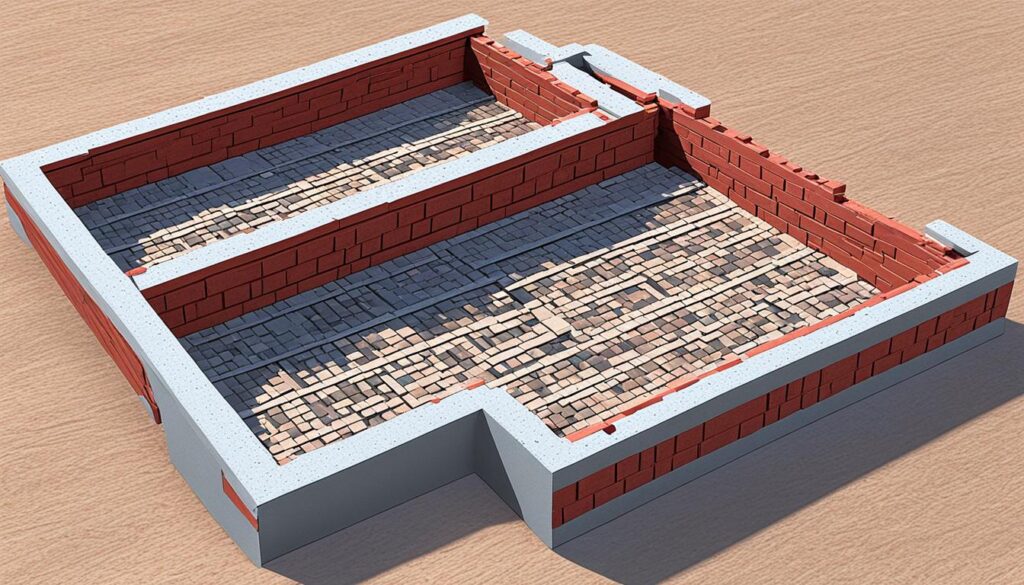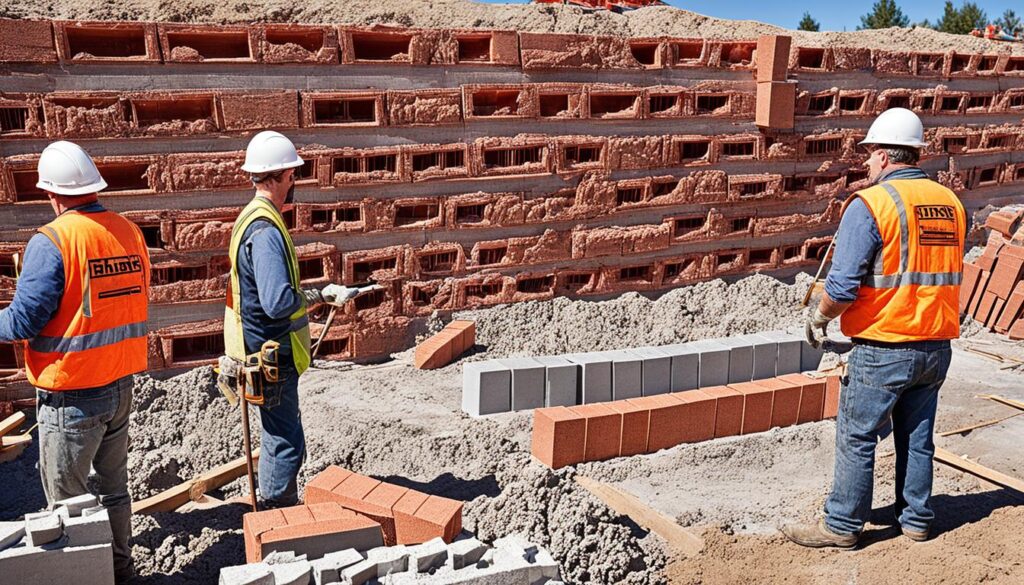
Everything You Should Know About brick Mold
Welcome to our comprehensive guide on brick mold, an essential component in construction projects. Whether you’re involved in building new structures or renovating existing ones, understanding brick mold and how to maintain it is crucial for the longevity and durability of your projects.
Brick mold, also known as brickmould or exterior casing, plays a vital role in creating a polished and finished appearance for doors and windows. It serves as a protective trim that covers the gap between the frame and the wall, providing both aesthetic appeal and functional benefits.
In the following sections, we will delve into the definition and purpose of brick mold, explore its uses and benefits in construction, and provide key maintenance tips to ensure its longevity and durability.
Key Takeaways:
- Brick mold is an essential component in construction projects, providing a professional and finished look for exterior doors and windows.
- It serves as a protective trim that covers the gap between the frame and the wall, enhancing the overall aesthetic appeal.
- Incorporating brick mold into your building projects can provide protection against moisture and drafts.
- Regular cleaning, inspection, sealing, and repair are crucial for maintaining the longevity and durability of brick mold.
- By following proper maintenance tips, you can ensure that your brick mold remains in excellent condition for years to come.
Understanding Brick Mold: Definition and Purpose
In the world of construction, brick mold plays a crucial role in providing a polished and professional finish to exterior doors and windows. But what exactly is brick mold, and what purpose does it serve? In this section, we will delve into the definition and purpose of brick mold, exploring its characteristics and functions that make it an essential component in building projects.

The Definition of Brick Mold
Brick mold, also known as door or window trim, is a wooden or PVC material that surrounds the perimeter of exterior doors and windows. It acts as a protective barrier against the elements, providing a neat and finished appearance.
“Brick mold is an indispensable architectural element, serving both functional and aesthetic purposes in construction projects.”
The Purpose of Brick Mold
The primary purpose of brick mold is to protect the opening around doors and windows from moisture, air leaks, and insects. It creates a barrier that helps to prevent water infiltration, keeping the interior dry and free from potential damage. Additionally, brick mold helps to insulate the gaps, reducing energy loss and improving the overall energy efficiency of the building.
Furthermore, brick mold enhances the aesthetic appeal of the building by providing a clean and polished look. It frames the doors and windows, adding definition and structure to the exterior design. Whether it’s a residential property or a commercial building, brick mold plays a significant role in creating a professional and finished appearance.
| Functions of Brick Mold | Benefits of Brick Mold |
|---|---|
|
|
As you can see, brick mold goes beyond its functional benefits by adding value and longevity to your building projects. It not only protects but also enhances the overall appearance, making it an indispensable architectural element in the construction industry.
Uses and Benefits of Brick Mold in Construction
Brick mold is a versatile and essential component in construction projects, offering a range of uses and benefits. Whether you’re building a residential home or a commercial structure, incorporating brick mold can enhance the aesthetic appeal while providing practical advantages. Here, we explore the various ways brick mold can elevate your construction project:
Enhancing the Aesthetic Appeal
Brick mold adds a touch of elegance and sophistication to the exterior of doors and windows. Its clean lines and defined edges create a polished and professional look, instantly elevating the overall appearance of your building. Whether you opt for a traditional or modern design, brick mold can seamlessly blend with various architectural styles, enhancing the visual appeal of your construction project.
Protection Against Moisture and Drafts
One of the primary benefits of brick mold is its ability to provide protection against moisture and drafts. When properly installed, brick mold creates a barrier between the doors/windows and the surrounding structure, preventing water infiltration and air leaks. This helps to maintain a comfortable and energy-efficient interior environment, reducing the risk of water damage and minimizing heating/cooling costs.
Durable and Long-lasting
Brick mold is typically made from durable materials such as PVC or wood, ensuring its longevity and resistance to wear and tear. Its robust construction allows it to withstand various weather conditions, including extreme temperatures, UV exposure, and moisture. By incorporating brick mold into your construction project, you can expect a reliable and long-lasting solution that requires minimal maintenance.
Easy Installation and Versatility
Another notable advantage of brick mold is its ease of installation. It can be seamlessly integrated into the construction process, bringing efficiency and convenience to your building project. Additionally, brick mold can be customized to fit different window and door sizes, allowing for versatility in design and layout. This flexibility enables architects and builders to achieve their desired aesthetic while maintaining functionality.
In conclusion, brick mold offers a range of uses and benefits in construction projects. From enhancing the aesthetic appeal to providing protection against moisture and drafts, its versatility and durability make it a valuable component to consider for your next building venture.

Maintenance Tips for Brick Mold: Ensuring Longevity and Durability
Proper maintenance is crucial for maximizing the longevity and durability of your brick mold. By following these essential maintenance tips, you can preserve its appearance and functionality for years to come.
Regular cleaning is key to removing dirt, debris, and stains that can accumulate on the surface of your brick mold. Use a mild detergent, warm water, and a soft brush to gently scrub away any build-up. Rinse thoroughly and allow it to dry completely before applying any protective coatings.
In addition to cleaning, regular inspection is essential to identify any signs of damage or wear. Look for cracks, chips, or gaps in the brick mold, as these could lead to water infiltration and structural issues. If you notice any damage, promptly repair or replace the affected sections to maintain the integrity of your brick mold.




